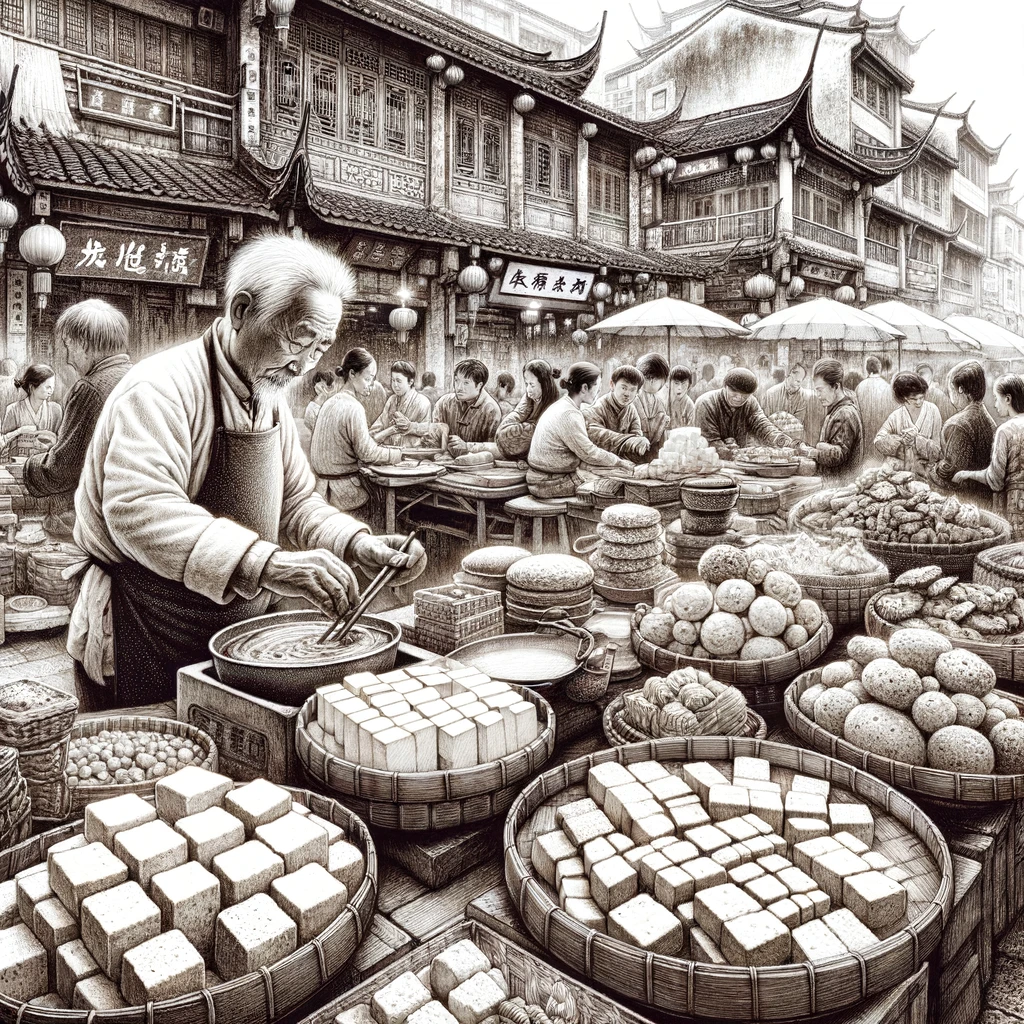Exploring the Rich Tapestry of Tofu: From Ancient China to Modern America

Tofu, a simple curd made from soybeans, has a rich and complex history that spans continents and cultures. In China, tofu has been an integral part of the culinary landscape for millennia, deeply rooted in traditions, economic necessity, and religious practices. The streets of Guiyang, a Chinese metropolis, exemplify this diversity, where tofu is not just a food item but a cultural artifact, reflecting the country’s long history with soybean curds.
The historical significance of tofu in China is intertwined with religious and economic factors. Buddhist and Daoist temple food, known as zhāicài, evolved from principles of non-violence and compassion, leading to a flourishing of vegetarian cuisine where tofu plays a central role. Imperial vegetarianism, especially during the Qing Dynasty, saw tofu transformed into lavish feasts, creating meat-like dishes from plant-based ingredients. These practices, deeply rooted in religious and cultural norms, showcase the versatility and culinary potential of tofu.
However, tofu’s place in Chinese culture is not without its paradoxes. Historically seen as the food of the poor, tofu’s association with poverty has impacted its desirability and culinary status. Despite its versatility and nutritional value, tofu is often perceived as a humble food, a relic of a bygone era of economic hardship. This perception contrasts sharply with the Western view, where tofu is often seen as a health food or a meat substitute, rather than a diverse and versatile ingredient in its own right.
In America, tofu’s story is different. While Asian communities appreciate the diversity of tofu, many Americans still view it primarily as a vegetarian option or a meat substitute. This limited understanding overlooks the breadth of culinary possibilities that tofu offers. In contrast to the Chinese view of tofu as an entire category of proteins, each with its unique culinary potential, the American perspective often fails to recognize tofu’s versatility and cultural significance.
The decline of traditional tofu craftsmanship in China reflects broader trends of modernization and changing dietary preferences. The story of Master Luo, a fifth-generation tofu maker who had to abandon his family business, highlights the challenges facing traditional food crafts in the face of modernization and globalization. As China and other countries undergo economic and cultural shifts, the value and perception of tofu and other plant-based foods are evolving, posing challenges and opportunities for preserving culinary heritage and promoting sustainable eating practices.
Tofu’s journey from the ancient streets of Guiyang to the modern kitchens of America is a testament to its enduring appeal and adaptability. As cultures and tastes continue to evolve, tofu remains a versatile and culturally significant food, bridging the gap between past and present, East and West.
